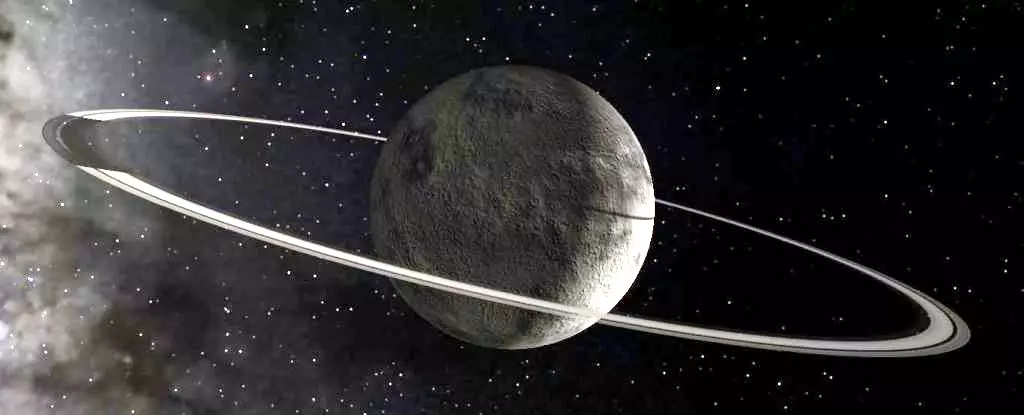In the far reaches of our Solar System lies Chiron, a captivating celestial body commonly classified as a centaur. Unlike most known centaurs, which mainly manifest characteristics of either asteroids or comets, Chiron stands apart with a distinctive blend of traits. Recent investigations utilizing the James Webb Space Telescope (JWST) have illuminated the peculiarities of Chiron, revealing that it may be unlike any other astronomical object we have examined. This article delves into the latest findings related to Chiron, exploring its complex nature and the implications for our understanding of the Solar System’s formation.
Centaurs are intriguing entities that occupy the region between Jupiter and Neptune. Their orbits transgress the paths of one or more of the giant planets, leading to behaviors that are often a fusion of asteroids and comets. Chiron defies conventional classification; while it shares similarities with asteroids, it occasionally exhibits comet-like behavior, even displaying rings akin to those of larger planets. The emergence of rings around Chiron further adds to its complexity, prompting scientists to theorize about the mechanisms and environmental factors at play in shaping this unusual centaur.
Chiron’s unique features fuel questions regarding the processes behind its evolution. These questions are underscored by the notion that Chiron could serve as a time capsule, preserving evidence of the Solar System’s early formation over 4.5 billion years ago. With its distinct attributes, Chiron offers scientists an exceptional opportunity to investigate primordial solar materials and the changes they undergo over eons.
A team led by Noemí Pinilla-Alonso from the University of Oviedo has been harnessing JWST’s advanced capabilities to probe Chiron more deeply. Pinilla-Alonso underscores the significance of small Solar System bodies, stating that these ancient remnants hold vital clues about our Solar System’s formation and evolution. Active centaurs, like Chiron, especially pique scientists’ interest because they are dynamic, undergoing alterations driven by solar activity. This transformation opens a window into understanding the composition and structural characteristics of these distant objects.
The JWST’s near-infrared observations have enabled researchers to scrutinize not only the gases and dust that Chiron sporadically releases but also to delve into the elemental makeup of both its surface and the surrounding coma. The coma, akin to a comet’s atmosphere, is vital for revealing the chemistry of Chiron. By identifying the gases expelled into this region, scientists can infer the physical and chemical properties beneath Chiron’s icy exterior.
Among the groundbreaking findings from these observations are the diverse compounds identified in Chiron’s coma; including carbon dioxide, carbon monoxide, ethane, propane, acetylene, methane, and water ice. The prominence of methane is particularly striking, indicating that Chiron’s environment is rich in this compound. Interestingly, the complex interactions between these various gases and the ice on the surface might suggest underlying geological processes that warrant further exploration.
The researchers speculate that many of these compounds may originate from primordial materials in the Solar System, inherited from its early history. Others could be the result of processes occurring on Chiron’s surface, possibly hinting at chemical alterations over time. Such insights are critical to understanding the active geological phenomena shaping Chiron and, by extension, providing a broader perspective on other celestial bodies of similar nature.
Despite these promising insights, Pinilla-Alonso cautions against hastily categorizing Chiron or its fellow centaurs. “There seems to be a trend of peculiarity among the active centaurs we’re observing,” she notes, suggesting that while distinct, they might still share underlying characteristics yet to be uncovered. Indeed, a key challenge lies in deciphering the numerous factors contributing to their behaviors and understanding how some of these properties translate across different centaur bodies.
As researchers continue their observations of Chiron—especially as it approaches Earth—there lies an opportunity to glean further insights into its dynamic properties. Seasonal changes and shifts in its perihelion, the point in its orbit closest to the Sun, may reveal vital clues about what drives these peculiarities and how they influence the evolution of centaurs.
Chiron’s unique characteristics not only make it an intriguing subject of study but also a critical piece in the puzzle of Solar System history. As researchers broaden their investigations using state-of-the-art technology like JWST, we stand on the precipice of exciting discoveries that could reshape our understanding of these enigmatic objects. As we delve deeper into Chiron’s intricate biological and chemical machinery, we may unlock secrets that have remained hidden for eons, enhancing our comprehension of the Solar System’s rich and complex narrative.


Leave a Reply